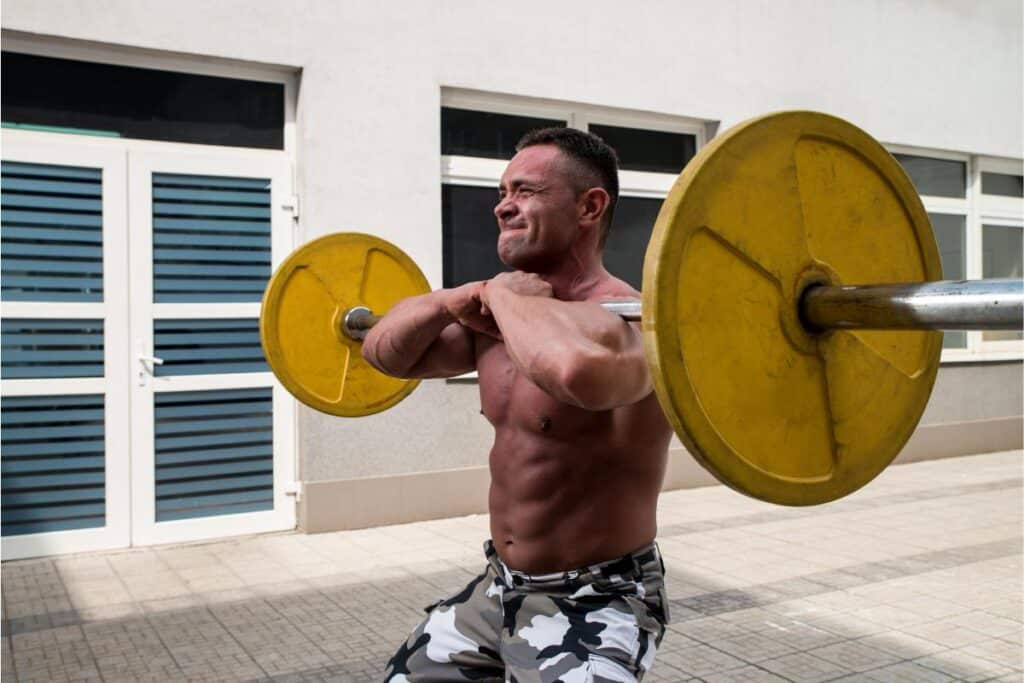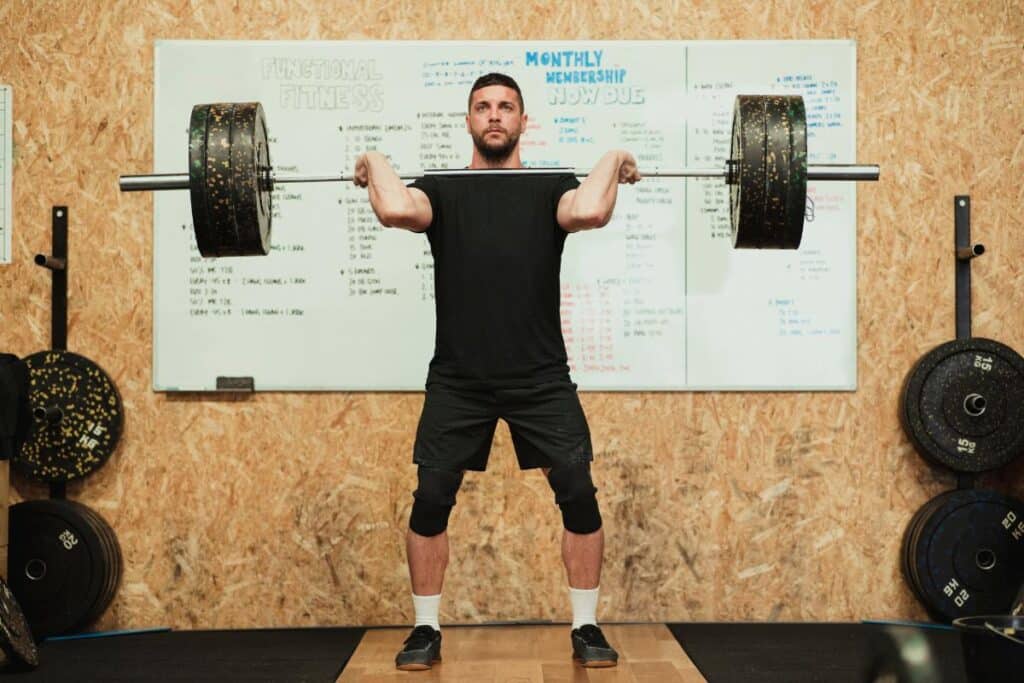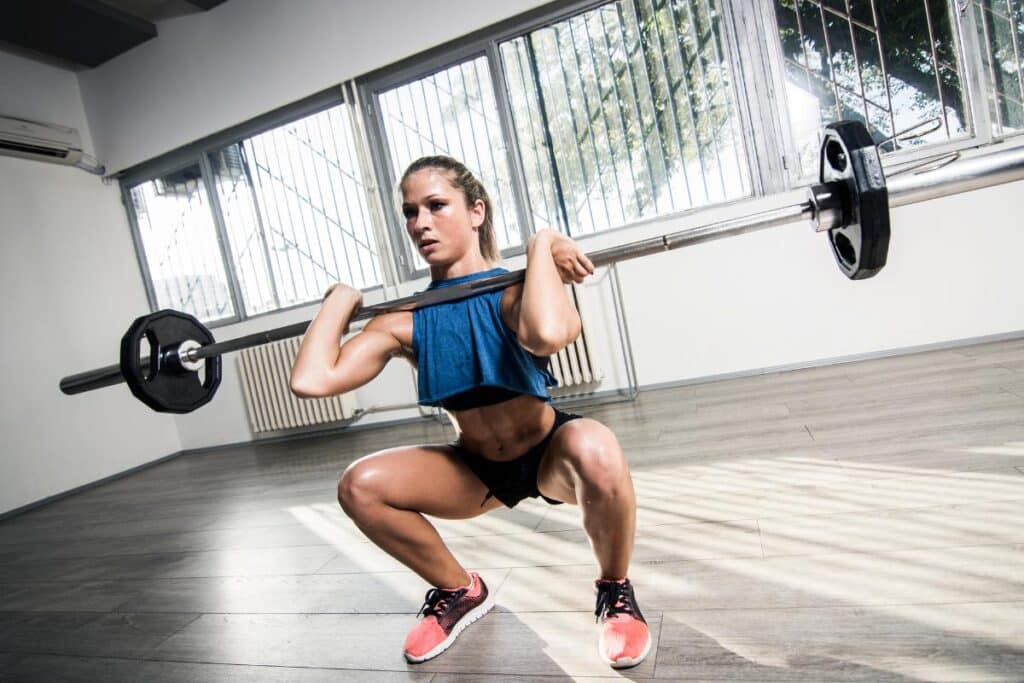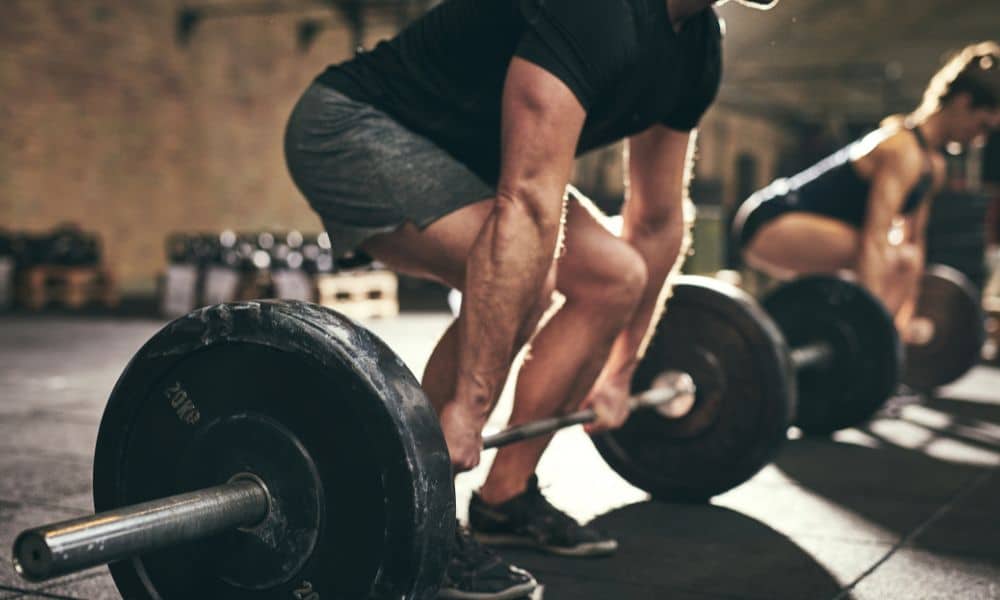The front squat is often overshadowed by its more popular counterpart, the back squat. However, this exercise offers unique benefits and can be a superior choice for certain fitness goals, particularly when it comes to building muscle in the quads and improving overall body mechanics. This article will cover the fundamentals of the front squat and how it can benefit your muscle-building journey.
Targeted Muscle Engagement
The front squat places a greater emphasis on the quadriceps than the back squat does. The anterior placement of the barbell forces the quads to work harder to keep the body upright, which can lead to significant muscle growth in the front thigh area.

Improved Posture and Core Strength
With the bar resting on the front of the shoulders, the front squat naturally promotes a more upright posture. This position requires strong engagement of the core muscles throughout the lift, which can lead to improved core strength and stability.
Front Squat Enhanced Mobility and Depth
The front squat often allows for greater depth than the back squat, which can lead to increased glute and hamstring activation. Moreover, the need for good ankle, hip, and thoracic spine mobility to perform a proper front squat can improve overall flexibility.
Reduced Lumbar Stress
For individuals with lower back issues, the front squat can be a safer alternative to the back squat. The upright torso position in the front squat reduces the shear forces on the lower back, which are more pronounced during the back squat due to the forward lean.
Technique and Form
Performing the front squat with proper technique is crucial:
- Elbows Up: Keep your elbows high throughout the movement to prevent the bar from rolling off the shoulders.
- Bar Placement: Rest the barbell on the front deltoids, close to the throat, with hands just outside the shoulders.
- Neutral Spine: Maintain a straight spine from the neck to the lower back.
- Weight Distribution: Keep the weight on the heels and mid-foot to ensure balance and power.

Implementing Front Squat into Your Routine
When incorporating front squats into your training:
- Volume and Intensity: Start with lighter weights to master the form before increasing the load.
- Frequency: Include front squats once or twice a week, depending on your overall leg training routine.
- Variety: Alternate between front and back squats to target different muscle groups and prevent overuse injuries.
Conclusion: Front Squat
Front squats are an effective and often underutilized exercise for building leg muscle, particularly the quadriceps. They offer additional benefits in terms of posture, core strength, and reduced stress on the lower back.
By incorporating front squats into your workout regimen, you can enjoy a more balanced and comprehensive leg development while also enhancing your squatting technique and overall body mechanics. Whether you’re a seasoned lifter or new to squatting, front squats can be a valuable addition to your muscle-building arsenal.




